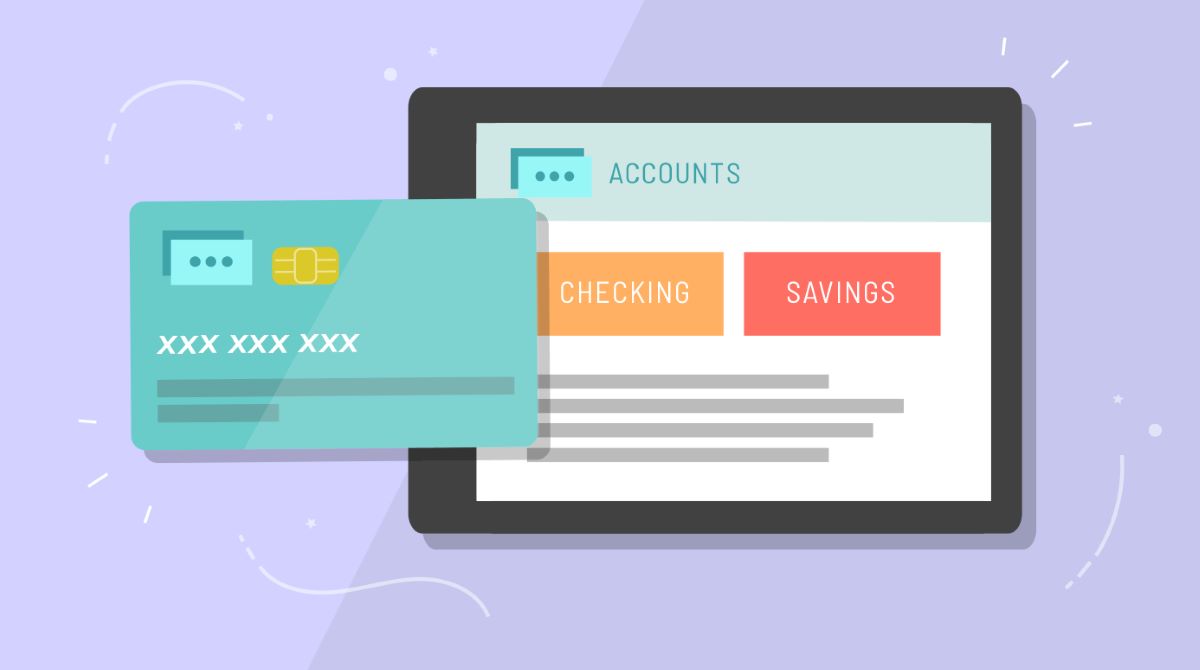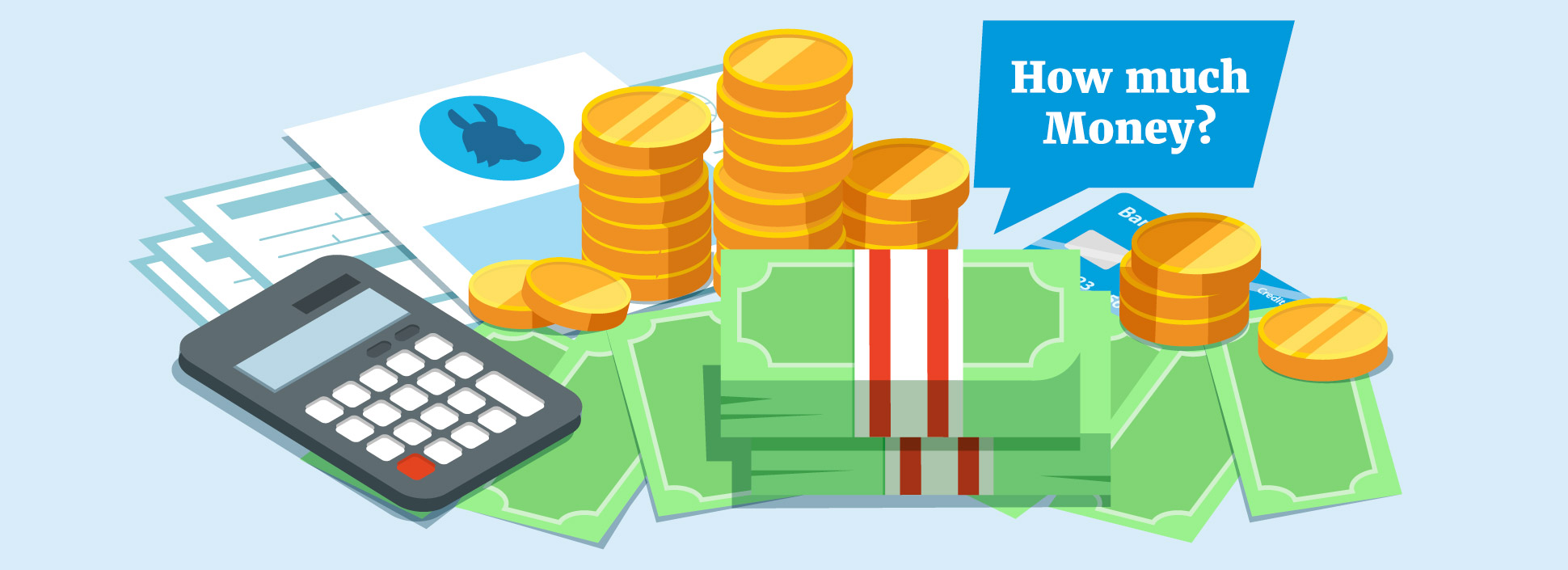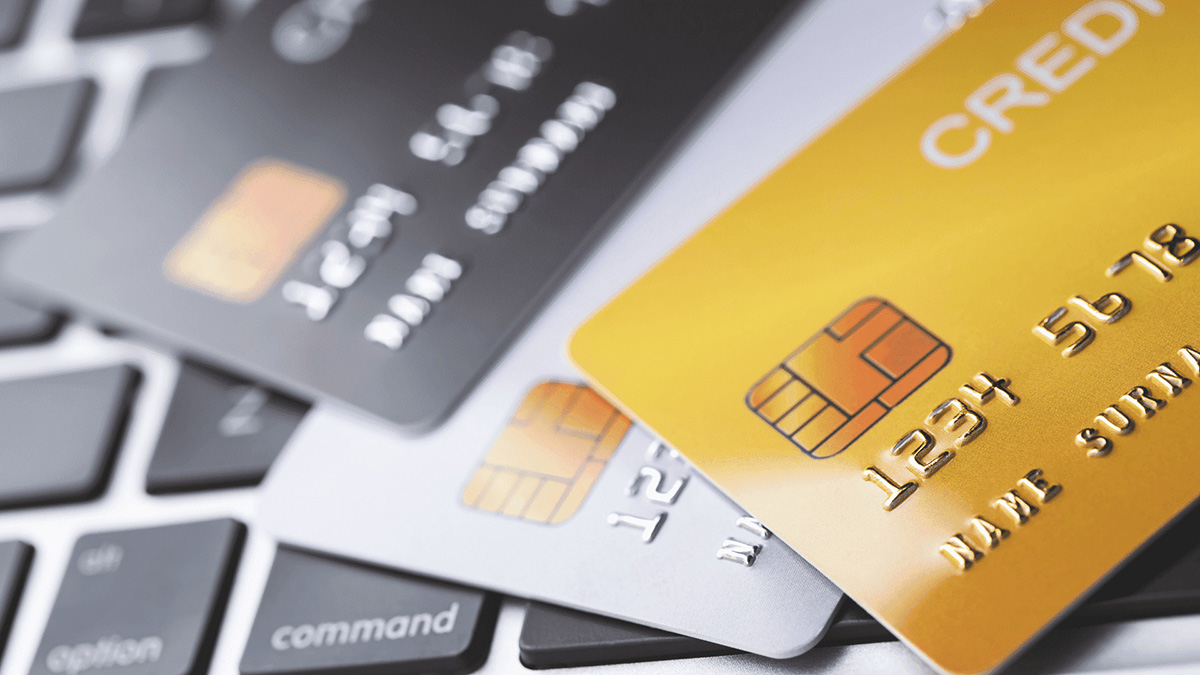Home>Finance>How Often Should You Typically Monitor Your Checking Account


Finance
How Often Should You Typically Monitor Your Checking Account
Published: October 27, 2023
Learn how frequently you should monitor your checking account to stay on top of your finances. Discover the ideal monitoring frequency for financial peace of mind.
(Many of the links in this article redirect to a specific reviewed product. Your purchase of these products through affiliate links helps to generate commission for LiveWell, at no extra cost. Learn more)
Table of Contents
Introduction
Managing your finances effectively requires careful monitoring of your checking account. Your checking account serves as a hub for your everyday transactions, such as paying bills, making purchases, and receiving income.
Monitoring your checking account is crucial to maintaining financial stability and preventing any potential issues. It allows you to keep track of your expenses, detect any fraudulent activity, and ensure that you have enough funds to cover your day-to-day expenses.
However, determining how often you should monitor your checking account can be a bit of a challenge. Some individuals prefer to check their account daily, while others choose to do so on a weekly or monthly basis. The frequency of monitoring depends on various factors, including your financial goals, personal preferences, and the level of financial stability you have.
In this article, we will explore the importance of monitoring your checking account and discuss the factors to consider when deciding how often to monitor. We will also weigh the pros and cons of daily, weekly, and monthly monitoring, providing you with insights to help you make an informed decision. Lastly, we will share some best practices to streamline the process and ensure effective monitoring of your checking account.
Importance of Monitoring Your Checking Account
Monitoring your checking account is not just a good financial practice, but a necessary one. Here are three key reasons why monitoring your checking account is important:
- Track Your Spending: By monitoring your checking account regularly, you can keep tabs on your spending habits. This allows you to see exactly where your money is going and identify any areas where you may be overspending. It also helps you stay within your budget and make necessary adjustments.
- Detect Unauthorized Transactions: Monitoring your checking account allows you to quickly detect any unauthorized transactions or fraudulent activity. By spotting these issues early on, you can take immediate action to prevent further damage and protect your finances.
- Maintain Sufficient Funds: Regularly checking your account balance helps you ensure that you have enough funds available to cover your expenses. This prevents overdraft fees, bounced checks, or declined payments. It also gives you the opportunity to transfer funds or take necessary actions in case your account balance is running low.
By monitoring your checking account, you have greater control over your financial health. It empowers you to make informed decisions, avoid unnecessary fees, and keep your finances on track.
Next, we will discuss the factors to consider when deciding how often to monitor your checking account.
Factors to Consider When Deciding How Often to Monitor
While there’s no one-size-fits-all answer to how often you should monitor your checking account, there are several factors to consider in making this decision:
- Financial goals: Consider your financial goals and how closely you need to monitor your account to stay on track. If you’re actively saving for a big purchase or trying to pay off debts, you may want to check your account more frequently to ensure you’re making progress.
- Income and expenses: Assess the frequency of your income and expenses. Those who have irregular income or make frequent transactions may benefit from checking their account more often to avoid surprises or oversights.
- Risk tolerance: Evaluate your tolerance for risk and the potential consequences of not monitoring your account regularly. If you’re comfortable with some level of uncertainty or have additional safety measures in place, you may be able to check your account less frequently.
- Technology and automation: Consider the digital tools and automation available to you. Many banking apps offer real-time notifications for transactions and balance updates, which can simplify monitoring and reduce the need for frequent manual checks.
- Account activity: Understand the level of activity in your account. If you have multiple recurring bills, frequent payments, or shared accounts, it may be prudent to monitor your account more frequently to avoid any issues or discrepancies.
These factors will help guide your decision-making process and determine an appropriate monitoring frequency that aligns with your specific needs and circumstances. Keep in mind that flexibility is key, and you can always adjust the frequency based on changes in your financial situation.
In the next sections, we will explore the pros and cons of daily, weekly, and monthly monitoring to further assist you in determining the ideal frequency for monitoring your checking account.
Daily Monitoring: Pros and Cons
Monitoring your checking account on a daily basis offers several advantages, but it also has some drawbacks. Let’s explore the pros and cons of daily monitoring:
Pros:
- Immediate detection of issues: By checking your account daily, you can quickly spot any unauthorized transactions, discrepancies, or errors. This allows you to take immediate action and mitigate any potential damage to your finances.
- Tight control over spending: Daily monitoring helps you stay on top of your expenses and maintain a tight grip on your budget. You can easily identify any unnecessary spending or areas where you need to cut back.
- Peace of mind: Regularly checking your account can provide a sense of security and peace of mind. You can rest assured knowing that your finances are in order and that you have control over your funds.
Cons:
- Time-consuming: Checking your account daily requires time and effort. It may not be feasible for individuals with busy schedules or those who prefer a more hands-off approach to their finances.
- Overreacting to minor fluctuations: Daily monitoring may lead to overreacting to minor changes in your account balance or transactions. This can create unnecessary stress and potentially cause impulsive financial decisions.
- Information overload: Constantly checking your account can result in information overload, especially if you have multiple accounts or complex financial arrangements. It can be challenging to distinguish important updates from minor details.
Consider these pros and cons in relation to your financial situation and preferences to decide if daily monitoring is the right approach for you. If you have a high level of financial complexity or limited availability, daily monitoring might not be practical or necessary.
In the next section, we will discuss the pros and cons of weekly monitoring.
Weekly Monitoring: Pros and Cons
Monitoring your checking account on a weekly basis offers its own set of advantages and disadvantages. Let’s explore the pros and cons of weekly monitoring:
Pros:
- Efficient use of time: Weekly monitoring allows you to consolidate your checking account management into a designated time slot each week. This can be more convenient and efficient for individuals with busy schedules.
- Balance between vigilance and simplicity: By checking your account weekly, you strike a balance between regular oversight and avoiding constant monitoring. This approach provides a good level of financial control without becoming overwhelming.
- Identify trends and patterns: Monitoring your account weekly allows you to observe spending patterns and identify trends over a longer period. This can be useful in adjusting your budgetary decisions for the following week.
Cons:
- Potential for delayed detection: Waiting a week between checks increases the likelihood of overlooking or missing any unauthorized transactions or errors. This may give fraudsters or mistakes more time to cause substantial damage to your finances.
- Slightly reduced control over spending: Checking your account weekly means you might not catch every small expense or budget deviation on a day-to-day basis, potentially leading to less immediate control over your spending habits.
- Less real-time awareness: With weekly monitoring, you might not have up-to-date information on your account balance and recent transactions. This can make it challenging to make immediate financial decisions or respond to sudden changes.
Consider these pros and cons in relation to your financial needs and lifestyle to determine whether weekly monitoring is the right fit for you. If you have a relatively stable financial situation and prefer a less frequent check-in, weekly monitoring can strike a balance between staying informed and avoiding excessive monitoring.
In the next section, we will discuss the pros and cons of monthly monitoring.
Monthly Monitoring: Pros and Cons
Monitoring your checking account on a monthly basis has its own set of advantages and disadvantages. Let’s explore the pros and cons of monthly monitoring:
Pros:
- Time-saving: Monthly monitoring requires the least amount of time compared to daily or weekly monitoring. It is suitable for individuals with relatively stable financial situations and limited availability.
- Big picture view: By checking your account monthly, you can gain a broader perspective on your overall financial health. This allows you to assess your progress towards long-term financial goals and make necessary adjustments.
- Reduced stress: Monthly monitoring can be less stressful compared to more frequent monitoring since it provides a longer timeframe to review transactions, balances, and other financial details.
Cons:
- Delayed detection of issues: Waiting a month between checks increases the risk of missing out on unauthorized transactions or potential errors, giving them more time to cause significant financial damage.
- Less immediate control: Monitoring your account monthly means you may not have real-time awareness of your spending habits and account balances. This may result in less immediate control and difficulty making timely financial decisions.
- Potential for oversights: With a longer gap between checks, there is a higher chance of overlooking minor discrepancies or mistakes that could impact your financial well-being.
Consider these pros and cons in relation to your financial goals and personal circumstances. If you have a stable financial situation, minimal account activity, and prefer a more hands-off approach, monthly monitoring might be suitable for you.
It’s important to note that regardless of the frequency of monitoring, staying vigilant and being aware of your financial transactions is crucial. In the next section, we will discuss other important factors to consider when monitoring your checking account.
Other Factors to Consider
When deciding how often to monitor your checking account, there are several additional factors to consider. These factors can help guide your decision and ensure effective monitoring of your finances. Here are some key considerations:
- Financial Stability: Assess your financial stability and cash flow. If you have a consistent income stream and well-managed expenses, you may not need to monitor your account as frequently. However, if you have irregular income or fluctuating expenses, more frequent monitoring may be necessary.
- Alerts and Notifications: Take advantage of technology and set up account alerts and notifications. Many banks offer email or text alerts for low balances, large transactions, or unusual activity. Utilizing these features can provide an extra layer of security and keep you informed without the need for constant monitoring.
- Financial Goals: Consider your short-term and long-term financial goals. If you’re actively saving for a specific purpose, such as a down payment on a house or a major purchase, more frequent monitoring can help you stay on track and make informed decisions.
- Account Security: Evaluate the security measures in place for your checking account. If you have strong passwords, two-factor authentication, and robust anti-fraud protection, you may feel more confident in monitoring your account less frequently. However, if you have any concerns or have experienced security breaches in the past, more frequent monitoring is advisable.
- Personal Preferences: Ultimately, consider your own comfort level and preferences. Some individuals may feel more at ease with regular monitoring, while others may prefer a less hands-on approach. Choose a frequency that aligns with your financial management style and gives you peace of mind.
By considering these factors, you can determine the ideal frequency for monitoring your checking account that suits your unique financial circumstances and preferences.
In the next section, we will share some best practices for effectively monitoring your checking account.
Best Practices for Monitoring Your Checking Account
To ensure effective monitoring of your checking account, it’s important to follow these best practices:
- Establish a Routine: Set a regular schedule for checking your account, whether it’s daily, weekly, or monthly. Consistency will help you stay on top of your finances and avoid overlooking any important transactions.
- Review Transactions: Take the time to carefully review all transactions on your account. Look for any discrepancies, unauthorized charges, or errors. If you notice anything suspicious, contact your bank or financial institution immediately.
- Monitor Balances: Keep an eye on your account balances to ensure you have enough funds available and avoid overdrafts. If necessary, set up automatic alerts for low balances to avoid any inconvenience.
- Track Spending: Use budgeting tools or apps to track your spending and categorize your expenses. This will give you a clear picture of where your money is going and help you identify areas where you can make adjustments.
- Utilize Digital Tools: Take advantage of the digital tools provided by your bank, such as mobile apps and notifications. These tools can provide real-time updates on your account activity, making it easier to stay informed and in control.
- Protect Your Account: Keep your account secure by using strong, unique passwords and enabling two-factor authentication. Regularly update your passwords and be cautious while accessing your account on public Wi-Fi networks.
- Review Account Statements: Even if you monitor your account regularly, don’t skip reviewing your monthly account statements. These statements provide a comprehensive overview of your account activity and can help identify any discrepancies that may have been missed.
- Stay Educated: Continuously educate yourself about the latest banking trends and security measures. Stay informed about potential scams, phishing attempts, and best practices for protecting your financial information.
By following these best practices, you can effectively monitor your checking account, detect any issues in a timely manner, and maintain control over your finances.
Finally, let’s conclude this article.
Conclusion
Monitoring your checking account is an essential part of maintaining your financial well-being. It allows you to track your spending, detect unauthorized transactions, and ensure you have sufficient funds to cover your expenses. The frequency of monitoring your checking account depends on various factors, including your financial goals, personal preferences, and level of financial stability.
Daily monitoring offers immediate detection of issues and tight control over your finances but can be time-consuming and lead to overreacting to minor fluctuations. Weekly monitoring strikes a balance between vigilance and simplicity, while monthly monitoring saves time but may result in delayed detection of issues. Consider your financial stability, the availability of technology and automation, and your personal tolerance for risk when deciding how often to monitor your account.
To effectively monitor your checking account, establish a routine, review transactions and balances regularly, utilize digital tools, protect your account with strong passwords and two-factor authentication, and stay educated about banking trends and security measures. By following these best practices, you can ensure that you stay on top of your finances, detect any issues, and make informed decisions.
Remember, there is no one-size-fits-all approach to monitoring your checking account. Assess your own financial situation and preferences to determine the ideal monitoring frequency for you. Regular monitoring will provide you with peace of mind and help you maintain control over your financial health.
So, take the necessary steps to stay vigilant and keep your checking account in check. Your financial stability and peace of mind depend on it.














